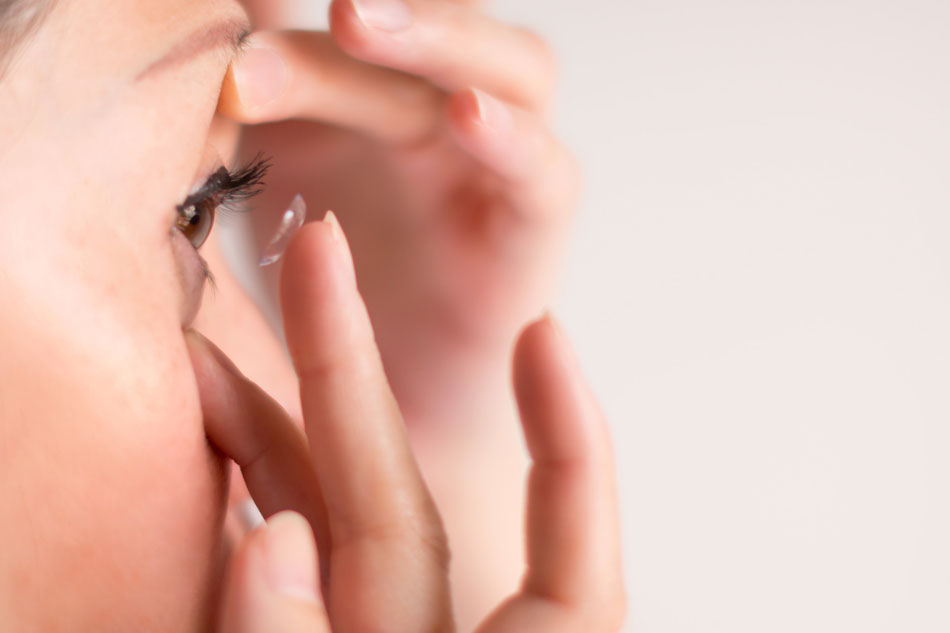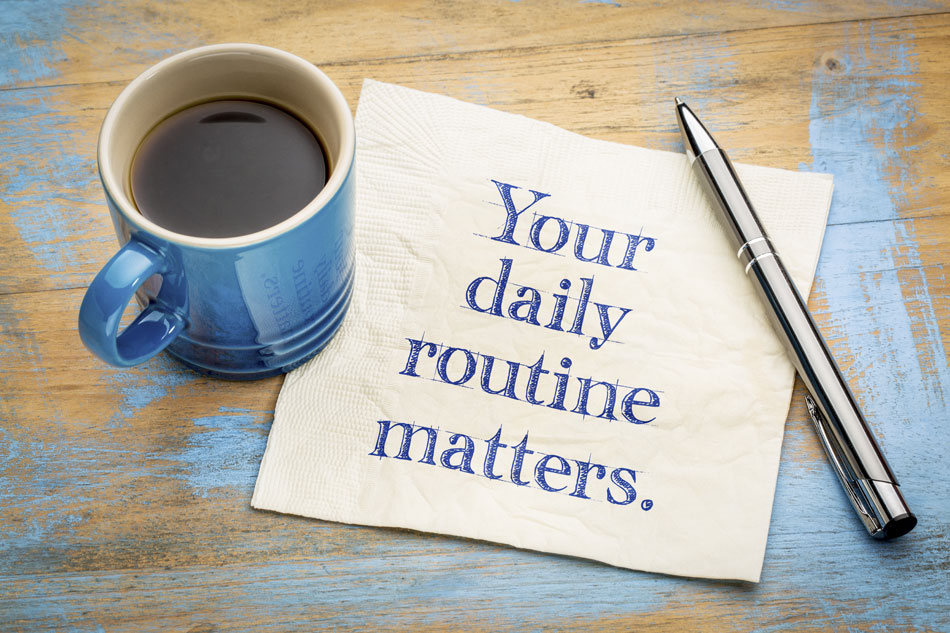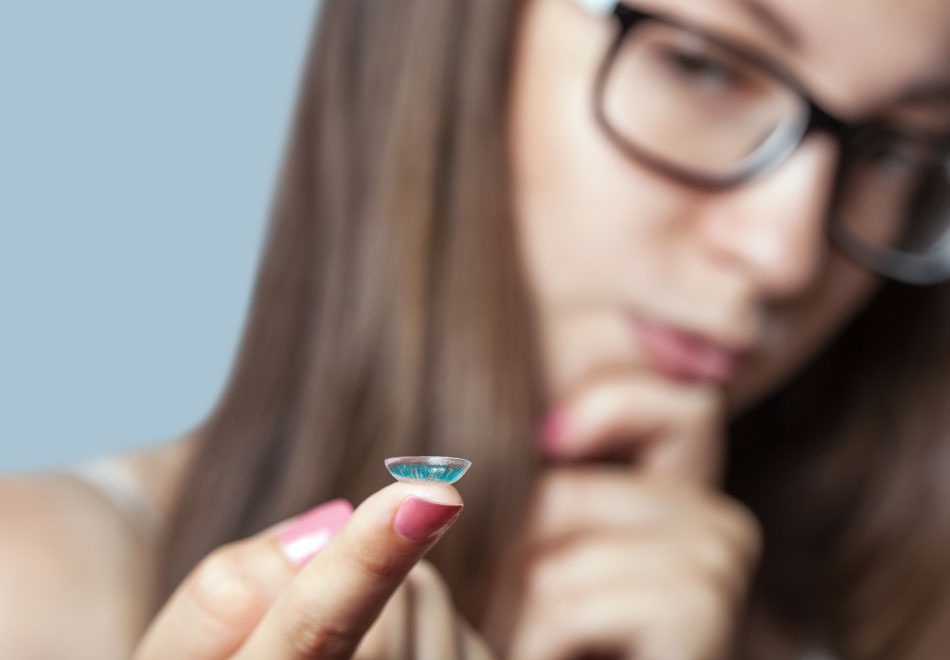Wearing Contact Lenses for the First Time? Follow These 10 Tips

Making the switch from traditional eyeglasses to contact lenses can feel exciting. But it can also feel like a daunting task. It’s always a good idea to learn more about what you’re getting into. That way, you can feel more comfortable about it.
If you’re wearing contact lenses for the first time, you might feel intimidated. After all, you’re dealing with your most valued and important sense: vision. While contacts have proven safe with proper usage, it's essential to understand how to use them in a responsible way. Infection and damage to the eyes can occur with improper care.
If you're new to the world of contacts, you're going to want to read this. We're uncovering 10 must-know tips for ensuring that your contacts are safe, reliable and comfortable. At the end of the day, it's always better to be safe than sorry!
1. Keep Calm
Your first time inserting a contact lens? Disregard the myths! A common worry for those who are new to contacts is that the contact will become stuck or lost in the eye. But it’s physically impossible for a lost lens to happen. There’s a membrane at the back of your eye that keeps things out. So your eyes are safe.
The best thing you can do is relax and make sure your hands are clean. Keeping your hygiene level high translates to a very low chance of infection.

2. Wash Your Hands
When it comes to inserting your contacts, be sure to always thoroughly wash your hands before insertion. Avoid oily and fragrance-heavy soaps. These chemicals can stick to your lens and end up in your eye. Also, be sure to dry your hands completely before putting the lenses in. Doing so minimizes the chance of spreading germs to your eye and helps to prevent infection.
3. Position Your Lens Properly
If you’re a first time wearer, you might not notice if your contact lens is inside-out. The trick is to place the lens carefully on your finger. Ensure that it forms the shape of a cup and hold it up to your eye. If the contact forms a simple "U" shape, then it’s in its proper position.
But if the contact forms a "U" shape and the top edges flare out, the lens is inside-out. Even if you insert the contact lens inside-out, it will not cause damage to the eye. Instead, it will feel incorrect and uncomfortable.
4. Develop a Routine

One of the most common issues that beginners report is forgetting which contact they put in. To avoid this, be sure to begin your contact lens routine with placing your first contact in the same eye each time. As a result, you’ll have an established order that prevents mixing them up in the process.
5. Avoid Touching Lenses With Your Fingernails
Fingernails are infamous for being havens for germs and dirt. If you’re not careful, these can infect your eyes. That’s why it's important that your contacts do not make contact (pun intended) with your fingernails. Also, watch out for sharp fingernails. It might be a good idea to regularly cut and file them to avoid damaging your lens.
6. Replace as Indicated
Resist the temptation to wear your contacts beyond their intended time frames. Even daily disposable contacts may still feel fresh and adequate after the 24-hour period is up. But it's essential to dispose of the lenses as instructed.
Each type of lens will have a strict usage period and it's vital not to extend beyond it. This can increase the risk of infection and can cause serious discomfort to your eyes.
7. Do NOT Rinse Lenses With Water

Every so often, you'll run out of contact solution and look to the next best thing to rinse your contacts with. In these situations, you must resist the urge to clean your contacts with water. In fact, it's best to avoid exposing lenses to water, even when showering or swimming. Water can contain bacteria that are harmful to the eye and can lead to infection.
8. Use the Right Contact Cleaning Solution
To make sure your contacts are good to wear, clean them regularly. Be sure to use fresh solution with every cleaning and to rinse the lenses and its case. Your optometrist will provide you with proper cleaning instructions based on the type of lens you’ve chosen. Don’t take any shortcuts! Cleaning your lenses is the most important habit you can form.
9. Be Honest With Yourself
There are plenty of different contact options available, from short-term to long-term use. With this in mind, choosing the right type of contacts for you is paramount.
If you can’t adhere to the cleaning and storage routine, be honest with yourself! There are always other options. You can choose disposable lenses that are only meant for daily use. This eliminates the need for cleaning and storage. So at the end of the day, you can just throw them out.
10. Contact Your Optometrist

If your contacts don’t fit quite right, call your optometrist. There are approximately 1 million eye infections in the U.S. on a yearly basis. While most are minor, the improper usage of contacts can lead to eye infections. Don’t fall into this category!
Your optometrist can answer any questions you have. He or she can ensure that you have the right contacts. They can also explain the safe insertion and removal process.
Wear Your Contacts Safely and Comfortably
Adapting to your new life with contact lenses isn't always a quick or easy process. In fact, it can take a few weeks to adapt to the routine and feel confident in both inserting and removing your contacts.
Make sure to wear your contacts in the safest and most responsible ways possible. From proper handwashing to adhering to replacement schedules, every detail is important. Your contacts will be safe to wear only when you follow their usage guidelines.
For more information on wearing contact lenses for the first time, be sure to visit our blog!